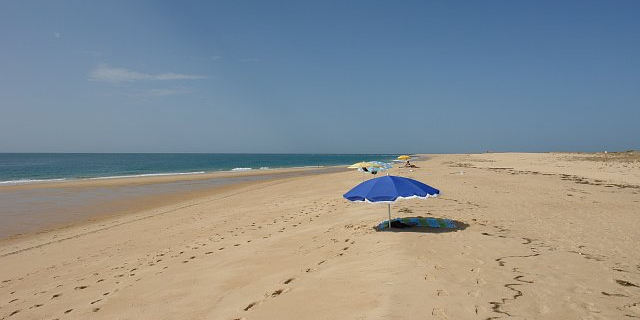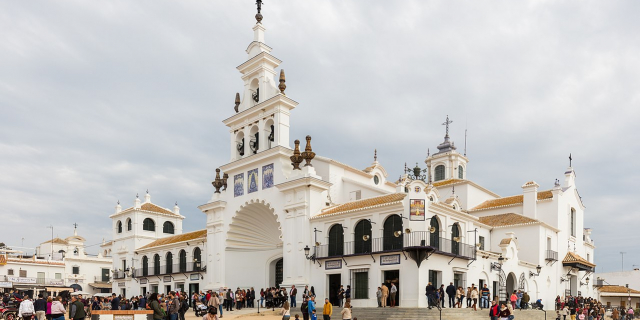Tavira
Tavira (Portuguese pronunciation: [tɐˈviɾɐ] ) is a Portuguese town and municipality, capital of the Costa do Acantilado, situated in the east of the Algarve on the south coast of Portugal. It is 28 kilometres (17 miles) east of Faro and 75 kilometres (47 miles) west of Huelva across the river Guadiana into Spain. The Gilão River meets the Atlantic Ocean in Tavira. The population in 2011 was 26,167, in an area of 606.97 km2. Tavira is the Portuguese representative community for the inscription of the Mediterranean Diet as a Intangible Cultural Heritage of Humanity of UNESCO.
 Tavira medieval bridge.
Tavira medieval bridge.Tavira's origins date back to the late Bronze Age (1,000-800 BC).[1] In the 8th century BC it became one of the first Phoenician settlements in the Iberian West. The Phoenicians created a colonial urban center here with massive walls, at least two temples, two harbours and a regular urban structure which lasted until the end of 6th century BC, when it was destroyed by conflict.
It is thought its original name was Baal Saphon, named after the Phoenician Thunder and Sea god. The Romans later called it Balsa.[2]
After laying abandoned for a century, it was revived and became an even larger settlement during the so-called Tartessian Period of Tavira, was again abandoned by the end of the 4th century BC. Another urban center emerged at nearby Cerro do Cavaco, a fortified hill occupied until the time of Emperor Augustus.
The Roman Empire to the Moorish ConquestDuring the time of Caesar, the Romans created a new port, some 7 kilometres (4 miles) from Tavira, named Balsa. Balsa became a big town, in fact much bigger than Tavira, that grew, prospered and decayed in parallel with the Roman Empire. When the Moors conquered Iberia, in the 8th century, Balsa was already extinct as a town.
Under Roman rule, Tavira was a secondary passing place on the important road between Balsa and Baesuris (today Castro Marim).
Moorish Rule Santiago church
Santiago churchThe Moorish occupation of Tavira between the 8th and 13th centuries left its mark on the agriculture, architecture and culture of the area. That influence can still be seen in Tavira today with its whitewashed buildings, Moorish style doors and rooftops. The Tavira Castle, two mosques and palaces were built by the Moors. The impressive seven arched "Roman bridge" is now not considered to be Roman after a recent archaeological survey, but originates from a 12th-century Moorish bridge. This was a good time economically for Tavira, which established itself as an important port for sailors and fishermen. The area remained rural until the 11th century when Moorish Tavira (from the Arabic Tabira, "the hidden") grew rapidly, becoming one of the important towns of the then Gharb al-Andalus (the west), today's Algarve.
The ReconquistaIn 1242 Dom Paio Peres Correia took Tavira back from the Moors in a bloody conflict of retaliation after seven of his principal Knights were killed during a period of truce. Dom Paio's Christian troops decimated most of Tavira's population and the few survivors were kept in a tiny quarter known as "Mouraria".
 Fishing boat in TaviraThe 1755 earthquake
Fishing boat in TaviraThe 1755 earthquake
In the 18th century, the port on its river was of considerable importance for shipping produce such as salt, dried fish and wine. Like most of the Algarve, its buildings were virtually all destroyed by the earthquake of 1755. This earthquake is thought to have reached 8.5–9.0 on the moment magnitude scale and caused extensive damage throughout the Algarve due to high intensity shaking (XI (Extreme) on the Mercalli intensity scale) and tsunamis.
The earthquake is referred to as the Lisbon earthquake due to its terrible effects on the capital city, although the epicentre was some 200 km (124 mi) west-southwest of Cape St. Vincent in the Algarve region.






























Add new comment